Vladivostok - the main Russian fortress in the Far East
The defenses that were built around Vladivostok for decades to protect the city from attacks from land and from the sea never became involved in serious military clashes with the enemy. However, their role in strengthening Russian influence in this region cannot be overestimated. It was the power of the Vladivostok fortifications that by its presence alone restrained a potential aggressor who simply did not dare attack the “fortress” of Vladivostok.
Officially, Vladivostok was declared a fortress on August 30, 1889, which was announced exactly at noon on the same day by the shot of a cannon installed on Tigrovaya Hill. At the same time, the Vladivostok fortress is the largest fortification in the world; of all the sea fortresses of the country, only it was included in the list of unique historical monuments of UNESCO. The "fortress" occupied more than 400 square kilometers of land and underground. The fortress at different times included up to 16 forts, about 50 coastal artillery batteries, dozens of different caponiers, 8 underground barracks, 130 different fortifications, up to 1,4 thousand guns.
Vladivostok itself was distinguished by a favorable geographical location. Located on the peninsula of Muravyov-Amursky, the city is washed by the waters of the Amur and Ussuri bays, which are part of the waters of Peter the Great Bay, the Sea of Japan. In addition, the city today includes about 50 islands, the largest of which is Russky Island with a total area of 9764 ha. The area of the remaining islands in total is 2915 ha. Also a feature of the area in the city and its surroundings is the presence of a large number of hills. The highest point in the historic part of the city is the Eagle's Nest (199 meters). The highest point on the territory of the urban district in the modern borders is the nameless mountain 474 meters in height (popularly called Blue Hill).
At the first stage of its development, the Vladivostok fortress faced two main problems: remoteness from the rest of the empire and, as a result, difficulties with the delivery of building materials and skilled labor. The second problem that hung over the fortress during almost its entire existence was underfunding of the works. And if with the first problem it became easier after the opening of the Trans-Siberian Railway and attracting local labor (Chinese, Koreans), then the lack of funding, in fact, could not be overcome, which did not prevent the construction of a fortified outpost in the Far East. The city, already proceeding from its geographical location, was destined for the fate of the outpost of Russia on the coast of the Pacific Ocean, the coastal fortress. The name of the city itself is consonant with the expression Vladya Vostok, which most fully reflects the role and importance of the city and the fortress for our country.
In the first period of its history, Vladivostok did not have reliable protection and fortifications. Even 20 years after the founding of a serious defense of the city from the sea and land simply did not exist. At that time, the very young city was covered only by 4 fortifications and about 10 coastal batteries, all of which were made of wood and earth. Among the technical innovations that appeared here rather quickly, it was possible to distinguish several powerful electric spotlights, which were placed on the shores of the Golden Horn Bay in 1885 for firing at night. These floodlights became the first example of the use of electricity in Vladivostok.
The weakness of the fortifications of the city and the port was not the result of underestimating its role or negligence. Just for the XIX century, this city was too far from Russia, which was separated from the central provinces of the country by the vast territory of Siberia and the impassable Amur taiga. In order to get to Vladivostok in those years, it was necessary for the month of month 2-3 to sail by boat from the ports of the Black Sea or the Baltic literally half the globe. In such conditions, any construction in the city, especially such labor-intensive and material-intensive, as the construction of powerful fortifications, became very expensive and difficult. The construction of modern fortifications in the city estimated 1883 of the year cost 22 million rubles at a time and up to 4 million rubles annually, for comparison, all expenditures on education in the Russian Empire were in that period a little more than 18 million rubles. It is not surprising that Vladivostok was officially declared a fortress only on August 30 1889 of the year, then he received his own flag of the fortress.
The following year, construction of concrete fortifications began here. At the same time, foreign hired workers from among the Chinese and Koreans were involved in the construction work. It is curious to note that the first potential enemy of the new Russian fortress was considered to be the fog that was not infrequent for these places (in such conditions, the batteries on the hills simply did not see where to shoot). In addition to the fog, the powerful British fleet, as well as the numerous army of China, were enrolled as potential enemies. Japan was simply not considered by the military as a serious opponent of Russia at that time.
In the spring of 1893, the first "mine company" arrived in Vladivostok on the steamboat "Moscow" - a military unit designed to set up underwater sea mines. By that time, the garrison of the fortress consisted of only three infantry battalions - two in the city itself and one on the Russian island. The main task of the fortress was then to protect the Russian fleethiding in the Golden Horn Bay from attacks from the sea and land. The defense system of the fortress consisted of three main elements. Firstly, coastal batteries located on the islands and in Vladivostok, which were supposed to prevent shelling of the bay from the sea. Secondly, underwater batteries covered by these batteries. Thirdly, a whole chain of land fortifications that crossed the Muravyov-Amursky peninsula and protected the fleet from attack and shelling from land.
Lack of funding for a long time prevented the construction of the most powerful fortifications. Instead of the planned 4 million rubles a year, 2 million rubles were allocated for construction at best. At that moment, the tsarist government was fascinated by the project to develop the leased Port Arthur, which was considered a more promising base for the Russian fleet in the Pacific than Vladivostok. Therefore, the latter was funded on a residual basis. The shortage of Russian builders also had an effect, which made them endeavor to attract Chinese to the work. In turn, this is very bad for secrecy. The intelligence services of China and Japan were well aware of the location of the Vladivostok fortifications.
At the dawn of the 20th century, the Vladivostok fortress included Fort 3, 9 field fortifications (redoubts, lunettes, etc.), 20 land batteries and 23 coastal batteries. At the same time, by the beginning of the Russo-Japanese War, far from all the objects of the fortress were fully prepared, there were not enough guns. The garrison of the fortress, not counting the gunners, consisted of two infantry regiments - in the city and on the Russian island.
During the years of the Russo-Japanese War, the military debut of the fortress took place. A month after the start of the war - 22 February 1904 of the year in 13: 30 squad of five armored cruisers of the Japanese squadron began shelling the city. The Japanese knew the location of the Russian coastal batteries well, so they fired from the most safe position for themselves from the Ussuri Bay. Since the ships were afraid to come closer to the fortress, they fired from afar, causing minimal damage. In the city, one person died from their fire, and the building of the 30 East Siberian Regiment caught fire. The shelling continued for 50 minutes and caused no harm to the fleet and fortress, although the Japanese ships themselves did not meet with resistance.
With all its shortcomings, the unfinished fortress played its role, the Japanese did not even think about landing in the south of Primorye. At the same time, during the war years, the fortress garrison was immediately increased 5 times, and a large number of field fortifications were also built around Vladivostok. After the end of the war in which Russia lost Port Arthur, Vladivostok became not only the only fortress and naval base of the country in the Pacific, but also the only equipped port in Russia located in the Far East, which immediately increased the importance of the city.
After the war, the first commander in chief of the fortress was General Vladimir Irman, who, during the defense of Port Arthur, distinguished himself for his personal heroism and skillful command of troops. It was he who appointed officers who had extensive experience in the defense of Port Arthur to command positions in the Vladivostok fortress. It was under their leadership that work began on creating the most powerful and modern fortifications at that time, which were built based on the experience gained during the defense of Port Arthur.
In the period from 1910 to 1916, the fortress was radically strengthened by the project, which was developed by a team of military engineers under the leadership of engineer A. P. Wernander. At the same time, the plan to modernize the Vladivostok fortress cost a lot of money - more than 230 million rubles or more 10 percent of the annual amount of all incomes of the Russian Empire. At the same time, immediately after the war, only 10 million rubles were allocated, and over the subsequent 10 years 98 million more rubles in gold.
During the work, several new forts and strongholds were built. More than 30 coastal batteries were built or reconstructed, 23 coastal anti-amphibious caponiers were erected, 13 tunnel powder powder cellars were built, an airfield on the Second River, a casemate meat cooler on the First River, more than 200 kilometers of high-rise roads. New fortifications built in the fortress had a large number of casemates and underground shelters, the thickness of concrete floors laid on steel channels on the asphalt-concrete layer reached 2,4-3,6 meters, which provided reliable protection even when shelling fortifications with 420 caliber mm guns. At the same time, the configuration of the forts created corresponded exactly to the terrain, the shape of which did not change, and the fire installations were specially dispersed over a large area, which seriously hampered the shooting of enemy artillery.
The rebuilt fortress was supposed to be the strongest in the world. It was planned that only with land it would cover 1290 guns, and from the sea - 316, including 212 guns of large caliber. In addition, it was planned to widely use well-proven machine guns for the defense of the fortress - all 628 machine guns in specially prepared protected bunkers.
By the beginning of the First World War, up to 12, thousands of hired workers from the central regions of the Russian Empire and thousands of Chinese and Koreans worked on the construction of the Vladivostok fortress. For reasons of secrecy, the military tried to refuse to engage in the construction of foreign labor, but in Primorye there was still a shortage of the Russian population and, as a result, of workers. The complexity of the construction work required the military engineers to use the most modern equipment that was not previously used in our country: pneumatic jackhammers, electric concrete mixers and lifting winches, the world's first Benz trucks and much more. In the most difficult places, cableways (on such a scale were used for the first time in the world) and temporary narrow-gauge rail tracks were organized. At the same time, especially for the delivery of thousands of tons of cement, crushed stone and sand to the forts from the railway station Second River, a railway line was specially built, which still exists today.
All new fortifications of the Vladivostok fortress were very complex engineering structures. In order to better understand the scope of construction, imagine that the fort "Peter the Great", located on Vargin Mountain, contained several kilometers of underground communications with concrete vaults up to 3,5 meters hidden in the rocky stratum, more than 4,5. Only the construction of this fort cost the Russian treasury more than 3 million rubles. By the time World War I began, a large fortress barracks foundation could freely accommodate a garrison of up to 80 thousands of people.
The outbreak of the First World War seriously slowed down the process of building forts in Vladivostok, and the 1917 revolution of the year led to a halt in all works. The subsequent years of civil war and foreign intervention, as well as the chaotic change of power in the region, turned the most powerful Russian fortress into a set of abandoned fortifications and looted warehouses. When the Japanese invaders finally left Primorye in 1922, they signed an agreement with the Far Eastern Republic on the "demilitarization" of the Vladivostok fortress. With its batteries and forts all artillery weapons were dismantled, it seemed that the fortress had disappeared forever.
«
But in reality, it began to be actively restored at the beginning of the 1930s, when Japan seized Chinese Manchuria, and the USSR acquired a very aggressive and strong neighbor near its Far Eastern borders. The Soviet leadership understood this perfectly, and the process of reviving the fortress began. Already in 1932, the old fortress positions on the islands and near the Golden Horn Bay received the first 7 heavy batteries. One of the people who was engaged in the revival of the fortress was Commissioner Semyon Rudnev, who would become famous in the future during the Great Patriotic War as a hero of the partisan movement.
At the same time in the south of Primorye a large number of concreted machine gun points were created in case of a possible war with Japan. For example, in order to protect Vladivostok directly, it was planned to build 150 concrete pillboxes with machine-gun or cannon armament. Bunkers were erected on the islands to cover the coastal batteries from a possible landing.
Since the Soviet fleet practically had no warships in the Pacific and was unable to resist the Japanese fleet, which by that time was already one of the strongest in the world, the armament of the Vladivostok fortress began to be reinforced with powerful coastal artillery. Already in the 1932 year, they began to build batteries of new 180-mm cannons that can throw 97-kilogram shells on 37 kilometers. This allowed the guns located on the islands of Russkiy and Popova to block the Amur and Ussuri bays by fire, covering all approaches to the city from the sea.
All heavy batteries built 1930-ies were installed in closed positions. They were equipped with a large number of underground and concrete structures and shelters, which provided protection for cellars with ammunition and power stations from heavy artillery shelling, air bombardment, and the use of poisonous gases. The system of emergency irrigation of cellars was also envisaged in the event of a fire or explosion of ammunition. Command posts of new batteries were built at a considerable distance from the firing positions. As a rule, they were connected with batteries by special underground galleries (battered). Unlike the pre-revolutionary period, this time all military installations were built exclusively by soldiers. Only the construction of outbuildings and barracks attracted hired workers, Koreans and Chinese, who in those years still lived a lot in Primorye.
In 1934, the Vladivostok fortress received its most powerful battery in history. In the southeastern part of Russky Island, a real “underground battleship” appeared - two rotating three-gun turrets with 305-caliber guns. Details of this battery were produced in the factories of Leningrad using cannons and towers from the still royal battleship Poltava. The most powerful battery of the fortress received the number 981 and its own name "Voroshilov battery", in honor of the People's Commissar of Defense of the USSR. The unsinkable battleship on Russky Island was too tough for even the most powerful fleet, and its projectiles, which weighed 470 kg, could travel 30 kilometers. It is no coincidence that this artillery battery remained in service for more than 60 years, until the end of the 20th century.
By the beginning of World War II, the Vladivostok fortress in official documents was called the BV GVMB TOF. Behind this long abbreviation was the Coastal Defense of the main naval base of the Pacific Fleet. Moreover, pre-revolutionary fortifications and forts were used as positions for anti-aircraft artillery, depots and command posts. Even the most powerful fortifications of Sevastopol and Kronstadt could not then be compared with Vladivostok. In 1941, the revived fortress consisted of more than 150 heavy cannons and fifty coastal batteries, as well as a large number of anti-landing batteries and machine gun points. Together with minefields and aviation all this formed an insurmountable barrier for the Japanese fleet on the sea approaches to the city. The power of the "Vladivostok Fortress" is called one of the factors that did not allow Japan, despite the alliance with Hitler Germany, to attack the Soviet Union.
In the spring of 1945, the first artillery radar stations were installed in the Vladivostok fortress, which allowed the cannons to fire accurately in the fog and at night. Although Vladivostok was never attacked by the enemy’s forces and fleets, several cannons that were part of the defense system of the city still took part in World War II. In August, 1945, the battery number 250, located on the island of Furugelm, fired at the limit of its range on the positions of the Japanese troops in Korea, supporting the advance of the Soviet troops.
Completion of the Second World War, and then a new era of missile and nuclear weaponsit seemed to leave forever an artillery fortress in the past. In the 1950-60 years, almost all artillery, with the exception of the most powerful batteries, was simply written off as scrap metal. However, the fortifications had to be remembered already in the 1969 year, after relations between the USSR and China had deteriorated sharply, and real fighting took place on Damanski Island. Vladivostok began on an emergency basis to prepare for defense in the event of the onset of the multimillion Chinese army. So in 1970, VLOR was formed - Vladivostok defensive area, the real successor of the Vladivostok fortress.
The most modern guns began to be installed on old batteries, for example, 85-mm semi-automatic guns, which were supposed to destroy the attacking masses of Chinese infantry with quick fire. In total, in the 1970s, more than 20 stationary “fortress” artillery batteries were restored or built in the vicinity of the city. Even the old heavy ones were used as fortifications of the Vladivostok Fortress Tanks IS-2 period of the Great Patriotic War, they were dug into the ground and protected by concrete. Such impromptu pillboxes covered, for example, the Vladivostok-Khabarovsk highway near the city of Artyom.
Separate machine gun points around the city continued to build, even in summer, 1991 of the year. However, the collapse of the Soviet Union predetermined the fate of this fortress. The latest shots of her naval guns sounded in 1992. Then, during the exercise, the famous “Voroshilov battery” launched a 470-kg projectile, which deviated from the set target of just 1,5 meters, which is just an excellent indicator even for modern rocket technology.
The official history of the Vladivostok fortress finally ended on July 30 1997, when the Russian “underground battleship” located on the island’s territory was finally removed from the Armed Forces of the Russian Federation and converted into a museum. Thus ended the history of the Vladivostok fortress, which was the most powerful stronghold in Russian history. Another museum was opened on October 30, 1996, in Vladivostok, on the territory of the Bezymyannaya castle, a museum of the same name “Vladivostok fortress” was opened, dedicated to its history.
Today the fortress is a unique monument, which is recognized as one of the most interesting and visited sites in Vladivostok. Its forts, coastal batteries, caponiers and other structures spread across the vast territory around the city and directly within its borders. If you will be in Vladivostok, be sure to find time to inspect the objects that are currently available for tourists, and if you are interested in military history, you will definitely get acquainted with the grand fortifications of one of the strongest fortresses in the world.
Information sources:
https://dv.land/history/vladivostokskaya-krepost?utm_source=tass&utm_medium=banner&utm_campaign=banner_240_400
http://fortvl.ru/kratkaya-istoriya-vozniknoveniya-i-razvitiya-kompleksa-vladivostokskoy-kreposti.html
http://www.fegi.ru/primorye/geogr/krepos.htm
https://ria.ru/vl/20130830/959580091.html
Open source materials
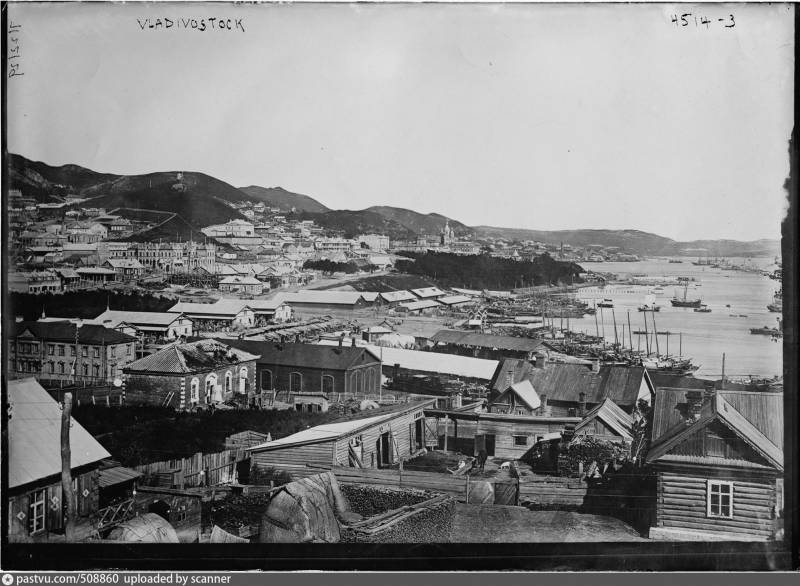
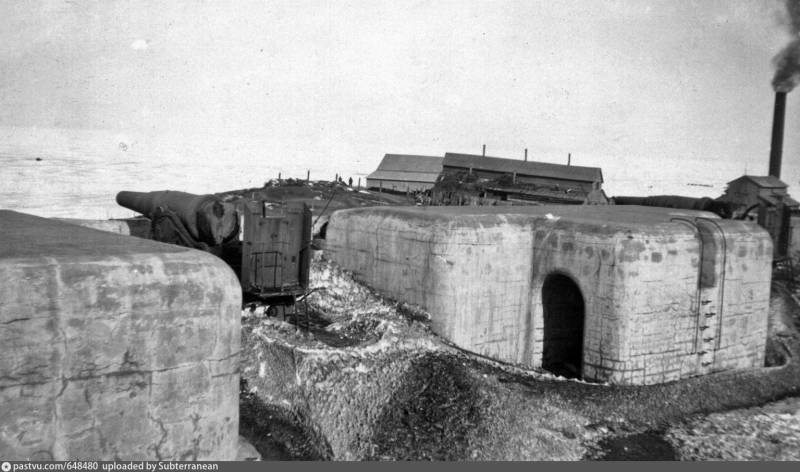
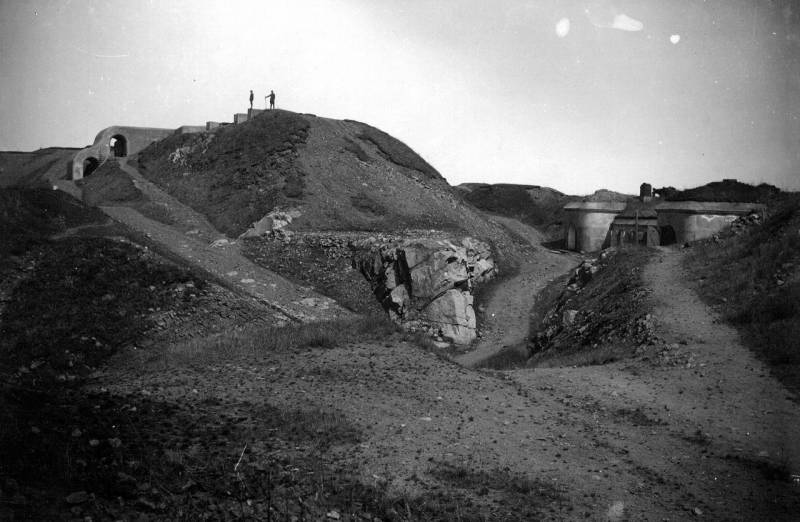
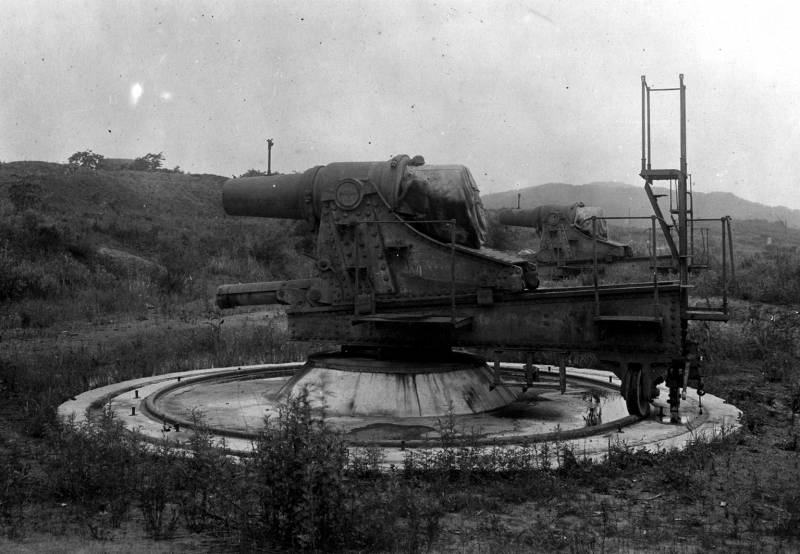
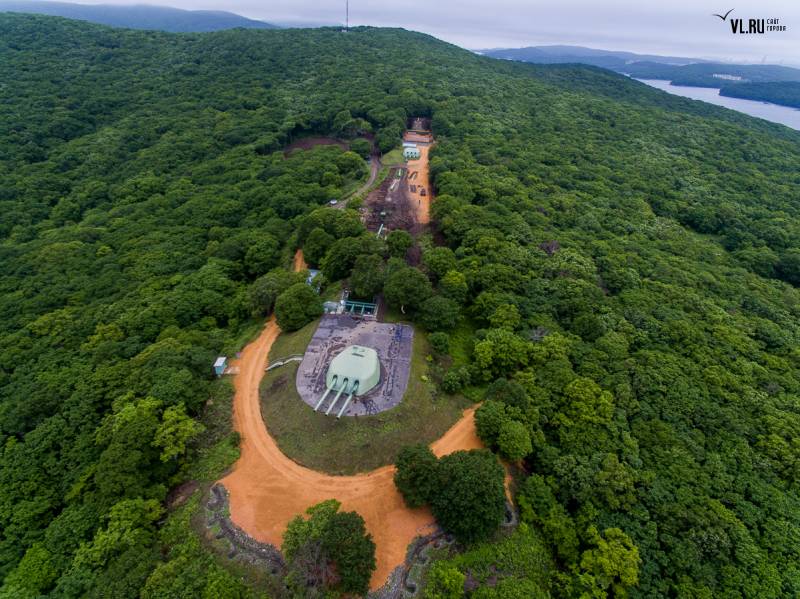
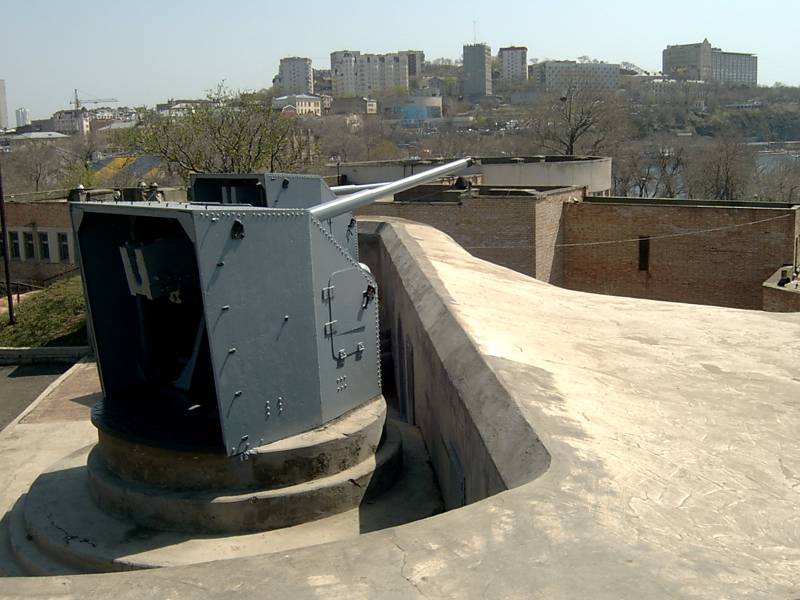
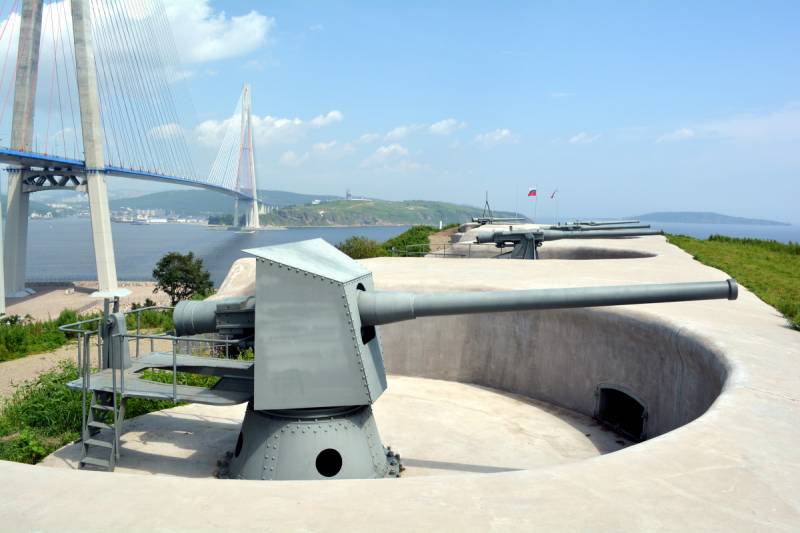
Information